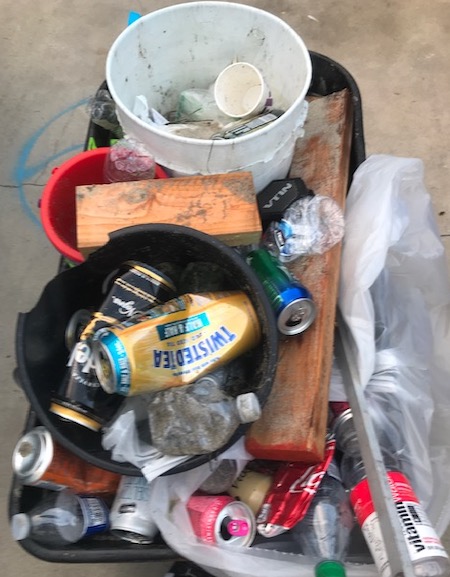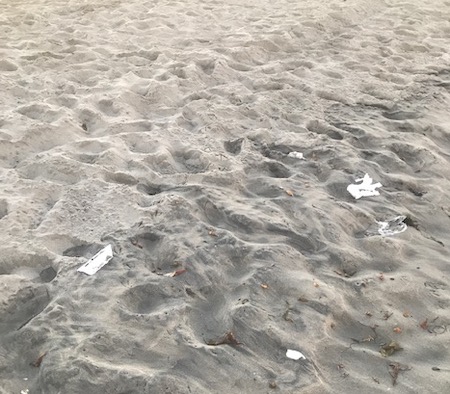For those who have been watching and reading about plastic pollution, I think it is universally accepted, that recycling is not the answer. First we have to stop the flow of plastic and then next develop a circular economy in which waste is reused.
Europe is so much further ahead than the United States in this concept. In fact, in March in Europe the first parts of a circular economy has been launched.

Press Release: Brussels, 4 March 2019:All 54 actions under the plan launched in 2015 have now been delivered or are being implemented. This will contribute to boost Europe’s competitiveness, modernize its economy and industry to create jobs, protect the environment and generate sustainable growth.
The European Commission today published a comprehensive report on the implementation of the Circular Economy Action Plan it adopted in December 2015. The report presents the main results of implementing the action plan and sketches out open challenges to paving the way towards a climate-neutral, competitive circular economy where pressure on natural and freshwater resources as well as ecosystems is minimised. The findings of the report will be discussed during the annual Circular Economy Stakeholder Conference taking place in Brussels on 6 and 7 March.
First Vice-President Frans Timmermans, responsible for sustainable development, said: “Circular economy is key to putting our economy onto a sustainable path and delivering on the global Sustainable Development Goals. This report shows that Europe is leading the way as a trail blazer for the rest of the world. At the same time more remains to be done to ensure that we increase our prosperity within the limits of our planet and close the loop so that there is no waste of our precious resources.”
Vice-President Jyrki Katainen, responsible for jobs, growth, investment and competitiveness, said: “This report is very encouraging. It shows that Europe is on the right track in creating investment, jobs and new businesses. The future potential for sustainable growth is huge and Europe is indeed the best place for an environmentally-friendly industry to grow. This success is the result of European stakeholders and decision-makers acting together.”
Moving from a linear to a circular economy
Three years after adoption, the Circular Economy Action Plan can be considered fully completed. Its 54 actions have now been delivered or are being implemented. According to the findings of the report, implementing the Circular Economy Action Plan has accelerated the transition towards a circular economy in Europe, which in turn has helped putting the EU back on a path of job creation. In 2016, sectors relevant to the circular economy employed more than four million workers, a 6% increase compared to 2012.
Circularity has also opened up new business opportunities, given rise to new business models and developed new markets, domestically and outside the EU. In 2016, circular activities such as repair, reuse or recycling generated almost €147 billion in value added while accounting for around €17.5 billion worth of investments.
EU Strategy for Plastics
The EU Strategy for Plastics in a Circular Economy is the first EU-wide policy framework adopting a material-specific lifecycle approach to integrate circular design, use, reuse and recycling activities into plastics value chains. The strategy sets out a clear vision with quantified objectives at EU level, so that inter alia by 2030 all plastic packaging placed on the EU market is reusable or recyclable. To boost the market for recycled plastics, the Commission launched a voluntary pledging campaign on recycled plastics. 70 companies have already made pledges, which will increase the market for recycled plastics by at least 60% by 2025. However, there is still a gap between supply and demand for recycled plastics. To close this gap, the Commission launched the Circular Plastics Alliance of key industry stakeholders supplying and using recycled plastics.
The rules on Single-Use Plastics items and fishing gear, addressing the ten most found items on EU beaches place the EU at the forefront of the global fight against marine litter. The measures include a ban of certain single-use products made of plastic (such as straws and cutlery) when alternatives are available and of oxo-degradable plastic, and propose actions for others such as consumption reduction targets, product design requirements and Extended Producers Responsibility schemes.

Innovation and Investments
To accelerate the transition to a circular economy, it is essential to invest in innovation and to provide support for adapting Europe’s industrial base. Over the period 2016-2020, the Commission has stepped up efforts in both directions totaling more than €10 billion in public funding to the transition.
To stimulate further investments, the Circular Economy Finance Support Platform has produced recommendations to improve the bankability of circular economy projects, coordinate funding activities and share good practices. The platform will work with the European Investment Bank on providing financial assistance and exploiting synergies with the action plan on financing sustainable growth.
Turning Waste into Resources
Sound and efficient waste management systems are an essential building block of a circular economy. To modernize waste management systems in the Union a revised waste legislative framework entered into force in July 2018. This includes, among others, new ambitious recycling rates, clarified legal status of recycled materials, strengthened waste prevention and waste management measures, including for marine litter, food waste, and products containing critical raw materials.
Circular Design and Production Processes
Smart design at the beginning of a product’s lifecycle is essential for ensuring circularity. With the implementation of the Ecodesign Working Plan 2016-2019, the Commission has further promoted the circular design of products, together with energy efficiency objectives. Ecodesign and Energy Labelling measures for several products now include rules on material efficiency requirements such as availability of spare parts, ease of repair, and facilitating end-of-life treatment. The Commission has also analysed, in a dedicated Staff Working Document, its policies for products, with the intention to support circular, sustainable products.
Empowering Consumers
The transition towards a more circular economy requires an active engagement of citizens in changing consumption patterns. The Product Environmental Footprint (PEF) and Organization Environmental Footprint (OEF) methods developed by the Commission can enable companies to make environmental claims that are trustworthy and comparable and consumers to make informed choices.
Strong Stakeholder Engagement
Stakeholder engagement is vital for the transition. The systemic approach of the action plan has given public authorities, economic and social players and civil society a framework to replicate in order to foster partnerships across sectors and along value chains. The role of the Commission in speeding up the transition and leading international efforts for circularity was also recognised at the World Economic Forum 2019 where the Commission received the Circulars Award in the Public Sector Category.
Open Challenges
The circular economy is now an irreversible, global trend. Yet, much is still needed to scale up action at EU level and globally, fully close the loop and secure the competitive advantage it brings to EU businesses. Increased efforts will be needed to implement the revised waste legislation and develop markets for secondary raw materials. Also, the work started at EU level on some issues (like chemicals, the non-toxic environment, eco-labelling and eco-innovation, critical raw materials and fertilisers) needs to be accelerated if Europe wants to reap the full benefit of a transition to a circular economy.
Interaction with stakeholders suggests that some areas not yet covered by the action plan could be investigated to complete the circular agenda. Building on the example of the European Strategy for Plastics in a Circular Economy, many other sectors with high environmental impact and potential for circularity such as IT, electronics, mobility, the built environment, mining, furniture, food and drinks or textiles could benefit from a similar holistic approach to become more circular.
Background
In 2015, the Commission adopted an ambitious new Circular Economy Action Plan to stimulate Europe’s transition towards a circular economy, which would boost global competitiveness, foster sustainable economic growth and generate new jobs. It was foreseen that the proposed actions would contribute to “closing the loop” of product lifecycles through greater recycling and re-use, and bring benefits for both the environment and the economy. The plans would help extract the maximum value and use from all raw materials, products and waste, fostering energy savings and reducing greenhouse gas emissions and would be supported financially by ESIF funding, Horizon 2020, the EU structural funds and investments in the circular economy at national level.
A full state of play of the implementation of the action plan is presented in an accompanying Staff Working Document.
For More Information
Report on the implementation of the Circular Economy Action Plan
Staff working document on Sustainable Products in a Circular Economy
Eurostat press release on progress in the monitoring framework
